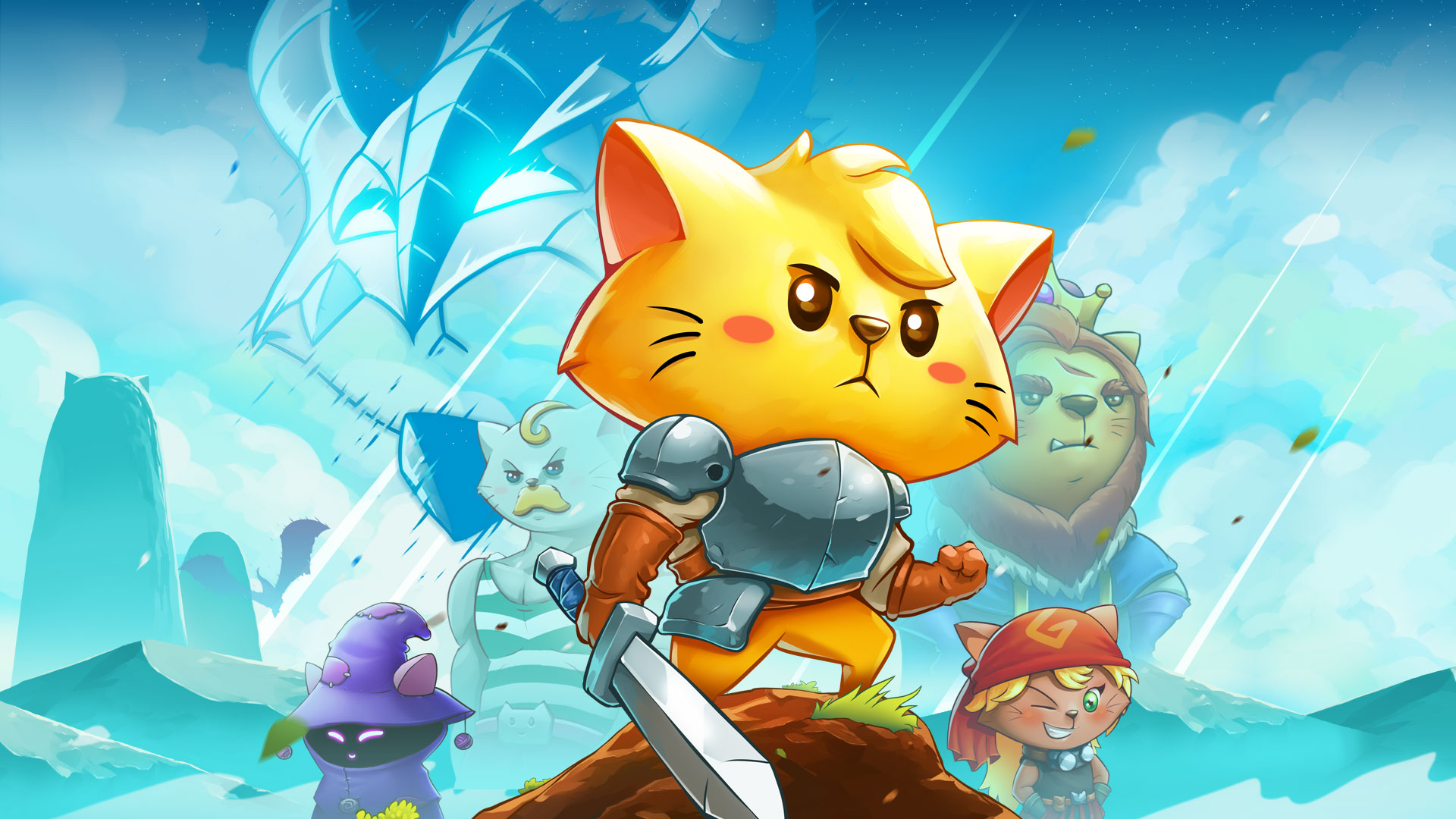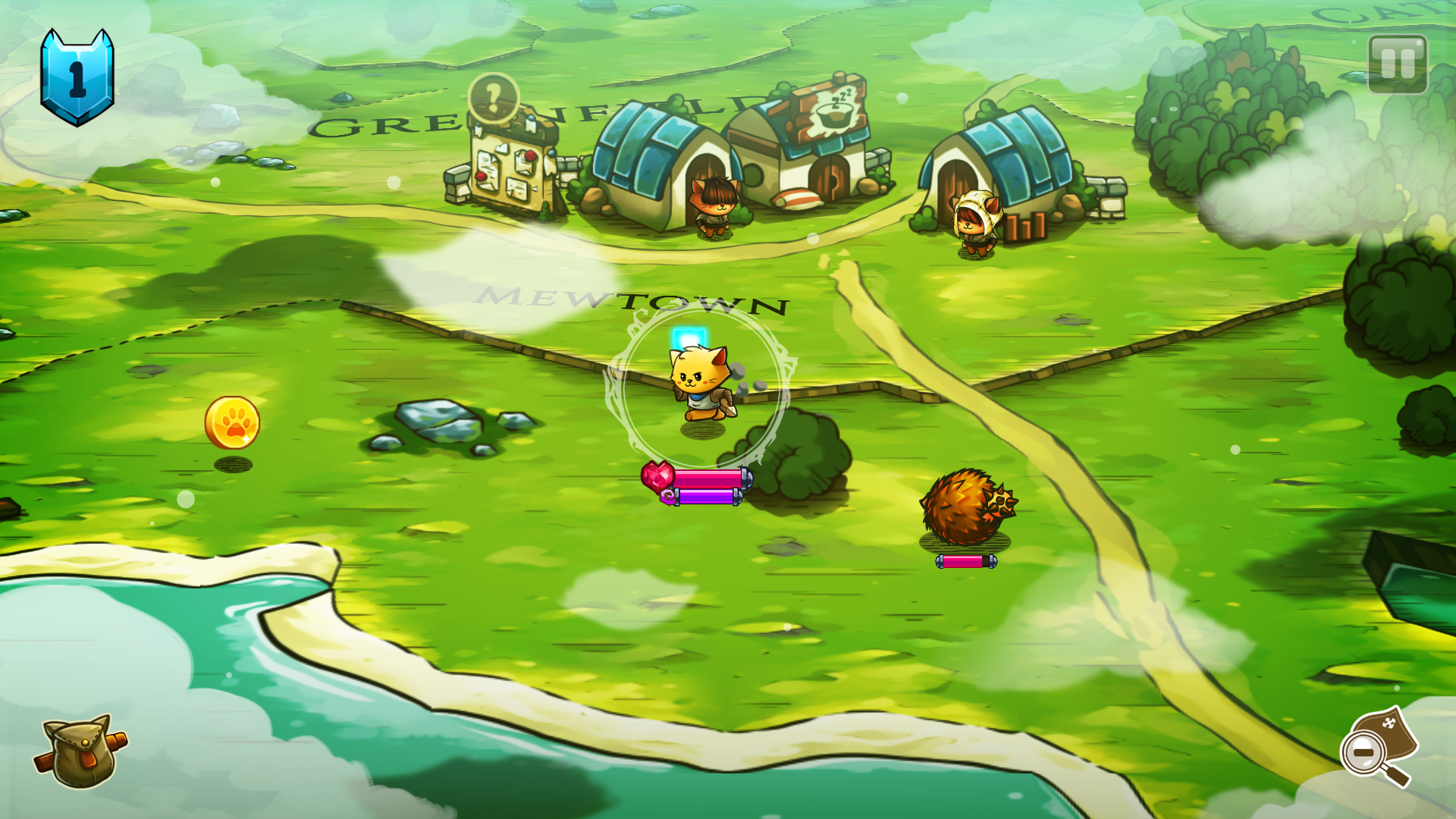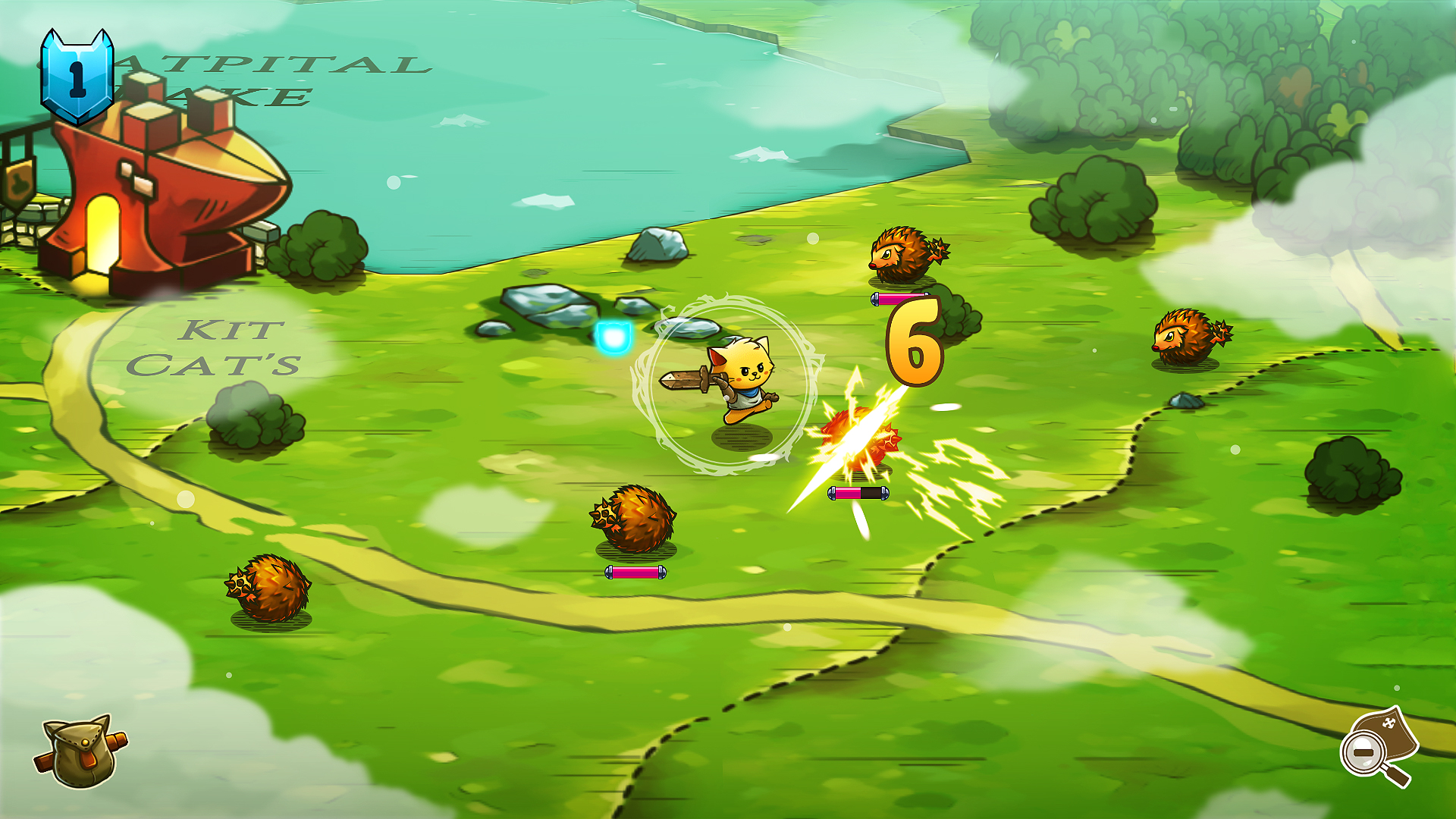As developers, it’s getting increasingly harder to earn money in the crowded indie space. So it’s starting to make more and more sense to put your game on as many platforms as possible to maximize your profits.
We’re The Gentlebros(@TheGentlebros), and we developed a little game called Cat Quest! Its been out for about half a year now(boy, how time flies!), and if you haven’t got it…what are you waiting for?! It’s out now on Switch, Steam, PS4 and mobile! :3
Alright with that shameless advertising aside, we’ve decided to share a little bit on our experience with shipping the same game across a multitude of platforms, what we did right and what we did terribly wrong!
It all starts from the beginning
Very early on, we knew we wanted to release Cat Quest on as many platforms as possible. This was very important as the game design needs to take this into account.
Take the controls for example. On consoles, players game with a controller. On PC, they can game on keyboard/mouse and controllers. On mobile, a vast majority of gamers use the touch screen(although MFI controllers are also available).
Your game needs to keep all these control schemes in mind. If you’ve already designed your game for a controller, and want to port to a mobile device at the last minute, you’re going to have a lot of problems, and probably won’t be able to make a game that feels ‘right at home’ on mobile.
The solution is to make sure every mechanic, every design choice, every art asset makes sense on all platforms at the same time. It’s really tough, I’m not going to lie, and you’re going to find yourself scrapping a lot of cool ideas because of this…but in the end, players are going to appreciate this and thank you for it.
We didn’t do this perfectly, but here’s an example using the magic system in Cat Quest. At first, our magic system had enemy targeting. You could aim your spell at an enemy and fling a fireball at it. This worked well on PC and consoles because you could just aim at an enemy with the keyboard or controller and just press a button. But on mobile, this wasn’t as easy. It was possible, mind you, but it wasn’t easy.
We wanted something that felt intuitive and only be a button press away, so we redesigned the magic system. We made it such that every spell only attacked in a very specific way. Flamepurr would do an AOE blast all around you. Lightnyan would zap enemies to your left and right, etc. This way, we removed the need to target enemies, simplified the magic system, and created something pretty unique at the same time.
Are mobile, PC and console players all that different?
This was a question that popped up during development. Are mobile and console players really all that different? If we designed for a mobile player in mind, will console players find it too casual, and vice versa.
Well, yes and no.
Controls aside(which we discussed a little bit earlier), we’re talking about general difficulty, complexity of systems and design methodologies. Generally, yes, consoles/PC players do like their games slightly more complex/deeper, while mobile players are gaming on the go, and want something they can play for five minutes and then stop.
So why not cater to both of them at the same time.
In other words, find the sweet, sweet middle ground.
We realised that as long as your game is fun, chances are that people are going to like it whether they’re a console or mobile player. We’re all people at the end of the day, the only difference is the device we’re gaming on and the situation you’re in when gaming on it.
Take a mobile player for example. As mentioned, they’re going to want something they can play for short bursts. The beauty is that console and PC players don’t mind that too. They’ll just play a long continuous session of short bursts instead.
Tip: Design your game for short bursts, but make sure those bursts can link up together for longer sessions too.
Another interesting thing we realized was that it’s okay for systems to be complex, as long as you can teach it well. It’s not like mobile players are less intelligent than console players, right? The only difference is the situation they’re gaming in.
Imagine you only have five minutes while waiting for the bus, and you want to get some gaming in. If the game has a massive wall of text teaching you the next cool mechanic, you’re going to get so turned off!
It’s not that the mechanic was too complicated, it’s because you got lazy teaching that mechanic. Consider making a better tutorial, one that integrates the lesson into gameplay itself. You’ll not only be teaching better, but you’re making a better game all round too.
Tip: It’s not that your system is too complex, its that your tutorial sucks!
Pricing your game!
Well, let us get this out of the way first. We’re not saying it’s impossible, but if you’re planning to put your game on both mobile and consoles/PC, do consider making the monetization model the same. By monetization model, we mean premium vs free to play!
The design for an f2p and premium game is so vastly different that it’s going to be very difficult to strike a balance between the two. It’s not impossible, mind you, and we’ve seen other devs do it, but if you can make your life easier….why not?
Tip: If you’re going multi-platform, try to keep the monetization the same.
Alright, with that out of the way, I’m going to assume you’re going premium(which is what we did)…so let’s talk pricing. Generally, most indie games on Steam and consoles are around $14.99 to $19.99 USD…but on mobile its $2.99 to $4.99 USD. Unless you’re Final Fantasy, pricing your game more than $4.99 is quite risky especially for a relatively unknown IP.
So now comes the conundrum…how do I price my game if the difference between PC and mobile is so large? Simple, you price them differently.(Cat Quest is $12.99 on consoles/PC, and $4.99 on mobile)
You’re going to get some backlash for sure(people will complain about something no matter what you do), but you’re also going to get lots of players who double dip because they really like your game.
We’ve had fans tell us that they bought and loved the game on mobile, so when the Switch version came out, they immediately got it so they could play on their big screen TVs.
You’d still want to give your console/PC players some added benefits though(to account for the price difference). This is where those added graphical bells and whistles come in.
Tip: Don’t be afraid to price your game differently. Price it based on your platform.
Preparing and launching your game on different platforms
So you have your game down, and you’re thinking of the launch. This is probably going to be the most important part, so don’t skip anything. These are also mainly tips for premium games, but some of them can be used for f2p as well.
General rule of thumb
Be it a more traditional premium game, or an f2p one, you’re going to want to build your community and fanbase at least 6 months before launch. A lot of developers fall into the trap of just launching and praying, but that’s as good as buying a ticket for the lottery.
There are many ways to do this. For us, we posted a lot in forums, Facebook and Twitter. We made sure to update those regularly with any new things we added, and to also include the fans in the development process. Nowadays, Discord is really hot and we’re seeing a lot of other developers use this to connect with their fanbase too.
The idea is that you’d want to build a base of fans who are there to support your game when it first launches. That initial push is super important, and it will help you get into the rankings which would in turn put your game in the eyes of even more people.
You’d also want to send review codes for your game at least 2 weeks before launch, with an embargo for the launch day. You’re basically giving the media enough time to play and write about your game, and making sure all the reviews come out at the same time, so it’s a splash rather than a splatter. Getting the media’s attention, however, is a story for another day…
Now for the specific tips for each platform…
iOS and Android
Really early on, try to get in touch with Apple and Google. There’s no sure way to do this, but for us, we met our contacts at game shows(casual connect, TGS, GDC etc), and we’ve been working with them ever since. Once your game is sufficiently playable and presentable, show them your game and get feedback as early as you can.
Besides getting really good, valuable info, this helps build a good relationship with the platform holders so when your game launches, they are more likely to feature your game.
For mobile, that feature makes up for a huge part of whether your game will succeed or fail, so make sure you do this!
Steam
Honestly, Steam is pretty touch and go. I’m not going to lie, it’s a really tough platform. Hopefully, you’ve built your community and they’re there to support you when you launch your game. What you want is for that initial push to get you into the Top Seller’s list(it took about a few thousand downloads on the first day for us). Once you’re there, half the battle is won because there’s going to be so many more eyes on your game.
Consoles
It’s a mix between mobile and Steam. Work closely with the platform holders, and hopefully they’ll feature you in their store front. Nintendo gave us a really nice preview on their Nindies list, and that initial push from our fans helped get Cat Quest in the Switch’s top seller’s list too. The idea is to try to get your game in front of as many eyes as possible. Easier said than done, of course!
Sony was also really supportive, and because Cat Quest was localized into Thai, they helped demo the game at various roadshows in Asia too(Thanks Sony!).
Things we could have done better!
Maintained parity in mechanics
Due to touch controls, we chose to omit the ability to dodge roll from Cat Quest on mobile device. We couldn’t think of a good way to add in touch controls for rolling, and felt that any solution we had was too cumbersome, or required us to rethink the control scheme altogether. Furthermore, at events and play test sessions, we didn’t have anyone report that the game needed a roll in the first place.
In the end, we decided it was best to remove rolling for mobile, and rebalanced the game just for mobile(yes, we basically balanced the game twice!).
What we didn’t foresee was the overlap of platform players. People who played the game on PC/consoles, and double dipped on mobile were asking us how to do the roll. Some were even asking for refunds because the mobile version was lacking in mechanics. It was pretty ugly, and something we wished we tackled more extensively earlier in development.
MFI gamepad support is really important
This was something we learned after we launched, and that was the existence of MFI controllers for mobile. Since our game could be played with a gamepad on PC/consoles, a lot of people asked if the same could be done on mobile. Well, since we didn’t even know about MFI controllers, the answer to that question was a big fat no!
We had a lot of people tell us they would only buy the game if it supported MFI controllers even despite us telling them the game worked well on touch screen. This just goes to show how important this aspect is to the current state of mobile gaming. Of course, your game still has to work great on touch screen(since this is where the majority of players would play your game on), but going forward, we are going to make MFI support a much higher priority(and so should you!).
Have a better balance in platform messaging
Since we were more familiar with the mobile platform, we were naturally more comfortable and notable in that particular space. As such, a lot of early coverage of Cat Quest was on mobile sites. Because of this, I think a lot of people started seeing Cat Quest as a mobile title(despite the game launching on Steam first mind you!), and because of that, a lot PC players started dismissing the game as a ‘crappy mobile port’.
It wasn’t until we started getting more articles written, more streams, and more glowing reviews, that this sentiment started turning around. We’re not exactly sure how much damage this did, because on the flip side, we did get a lot of love from the mobile side of the industry(making up more than a third of our total revenue!). We’re not sure how things would have fared if we went the other way instead.
However, after having spoken to many other developers, we started to hear a common train of thought; release on PC/consoles first to get the prestige, then months later, release the game on mobile. We’re still not sure how great this is, because what we found worked well from a simultaneous release was that for that week your game launches….everyone is talking about it! Would you rather an explosion of press, or a splatter?
Going forward, I think we’re going to try a more balanced approach. Make it clearer that the game is coming out on all platforms, and how its awesome on every single one. It’s going to be much harder, and it might dilute the messaging, but hey, maybe we’ll write another postmortem on that when we find out!
Afterthoughts
At the end of the day, we are super happy with how Cat Quest turned out! It may not have made the most money out there, but for a three man team, we think it did really well for us! Plus, we have the bestest group of fans any developer could ask for! Thank you all so much!
The game also allowed us to travel the world attending events and receiving awards! In a single year, we went to Japan, Germany, Taiwan and even to the DICE awards at Las Vegas earlier this year(where I personally met so many of my childhood heroes from game development! Also saw Neil Druckmann but was so star stuck I forgot to say hello, dammit!).
It’s been a whirlwind of a ride, and to think before Cat Quest came out, we were all out of money and didn’t think the game was going to be successful at all! But now we have people from Ubisoft, Blizzard and even Square Enix message us saying how much they love Cat Quest! Funny how life has a way of surprising you!
So dreams do come true, guys. Well, until the next game at least!
Cat Quest is out now on iOS, Android, Nintendo Switch, PlayStation 4 and Steam!
If you want to ask us anything or just want to poke us, you can find us on Twitter or Facebook!






